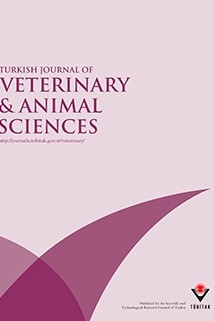
Turkish Journal of Veterinary and Animal Sciences
Yazarlar: Muhammad A. MUIEED, Zafar İ. CHAUDHARY, Abdul R. SHAKOORI
Konular:-
Anahtar Kelimeler:Turk. J. Vet. Anim. Sci. 2010,34: 507-512. Full text: pdf Other articles published in the same issue: Turk. J. Vet. Anim. Sci.,Vol.34,Iss.6.
Özet: The lack of reliable diagnostic methods is a setback in the effective control of diseases. Diagnosis of Trypanosoma evansi infection (surra) in livestock is of considerable economic importance. Detection of trypanosomes in blood has been the "gold standard"; however, finding the organisms or establishing patency of parasitaemia has not always been possible even in symptomatic infections. As a consequence of low dose infection, the pre-patent period in Trypanosoma evansi may be longer and, even when symptoms have developed, trypanosomes may still not be demonstrable in blood, thus delaying treatment and thereby increasing morbidity and mortality. Trypanosoma evansi, a protozoan parasite in the blood of horses, is routinely diagnosed by finding the flagellates in the stained smear of blood examined under a microscope. Although specific, this method is not sensitive at the early stages of infection. Using a specific pair of primers we tested the use of polymerase chain reaction (PCR) in comparison with microscopic examination, i.e. Giemsa stained smear method, for the diagnosis of Trypanosoma evansi infection (surra) in horses. The PCR method was sufficiently sensitive; using this method out of 100 blood samples examined from horses in Lahore, Pakistan, 16 (16%) showed a positive reaction (a 164-bp fragment) as visualized by agarose gel electrophoresis and 5 (5%) were positive by microscopic examination. These findings suggest that PCR is a useful diagnostic tool for detecting Trypanosoma evansi infected horses in the very early stages where microscopic examination is equivocal. Application of PCR to field diagnosis is therefore clearly indicated by the results. Field application of PCR would not only ensure early diagnosis and treatment in individual animals but would also help eliminate the animal reservoir of infection and thus the threat to equine and camel herds that are grazed and housed together and where blood sucking mechanical fly vectors are ever present.
Dergi editörleri editör girişini kullanarak sisteme giriş yapabilirler. Editör girişi için tıklayınız.